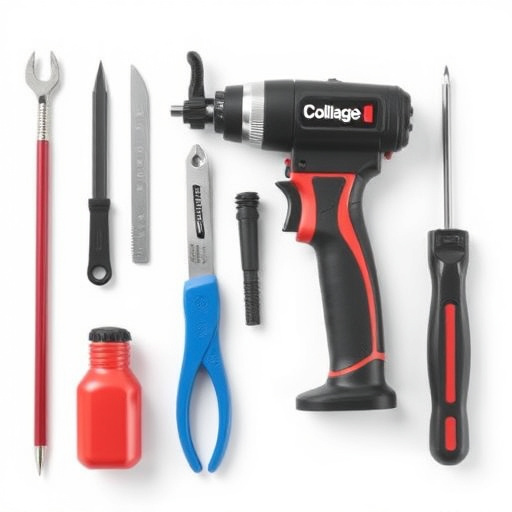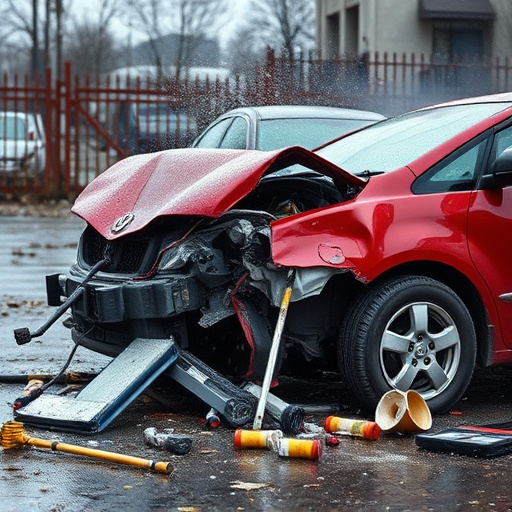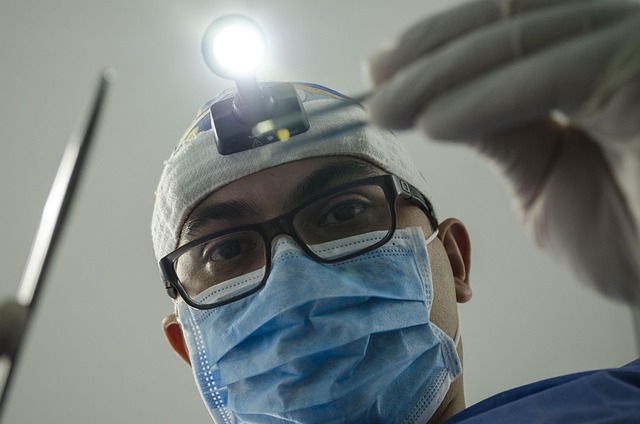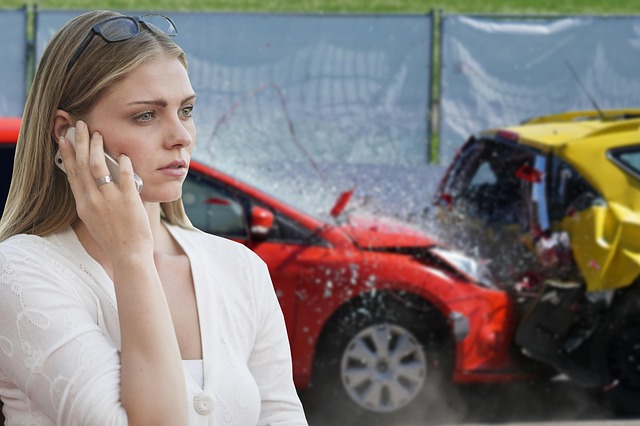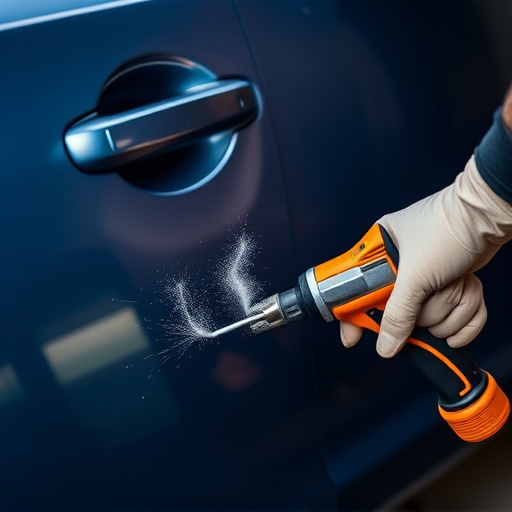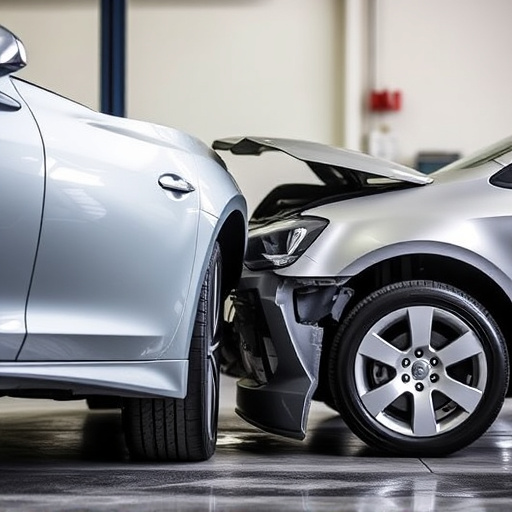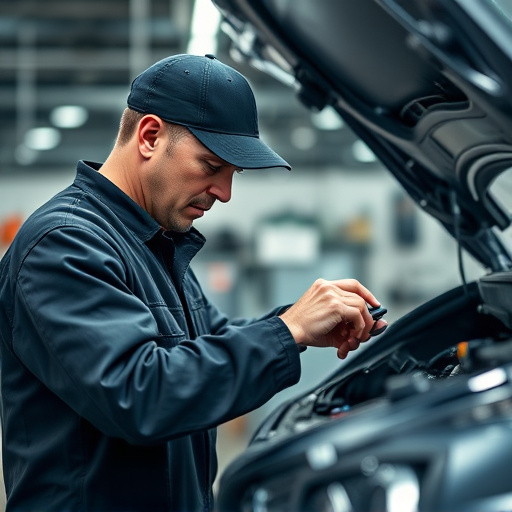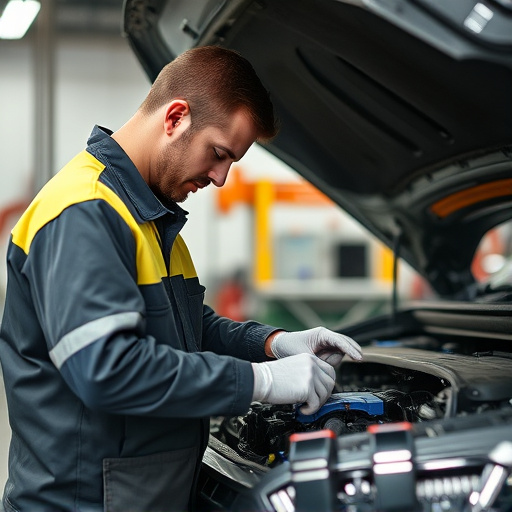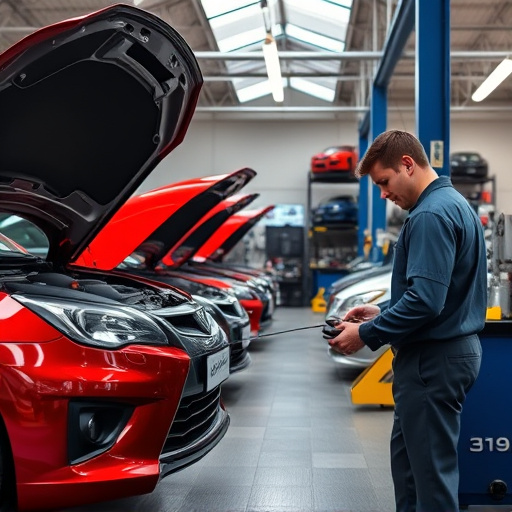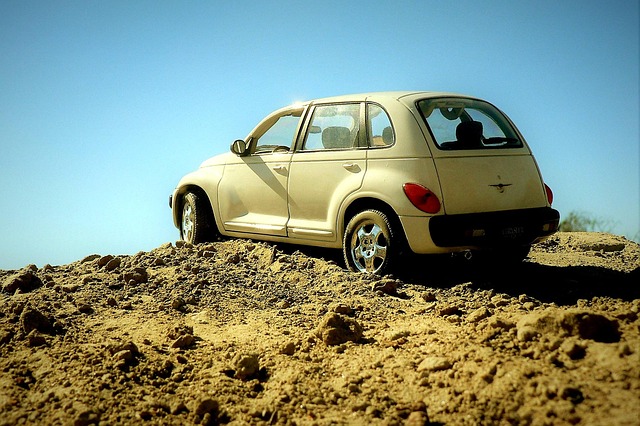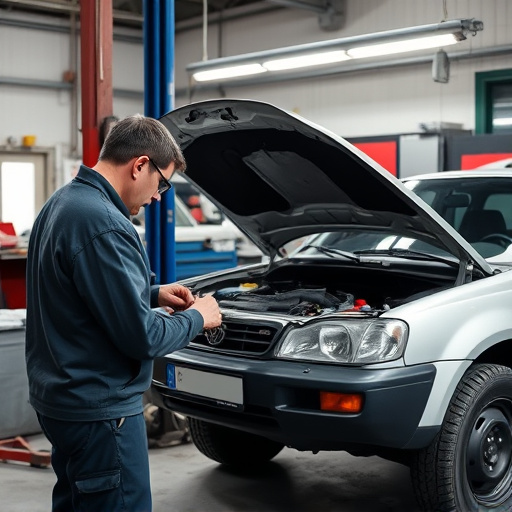To prepare for plastic bumper cover repair, clean and dry the surface, fix scratches and cracks, and ensure optimal temperature conditions. Use automotive-specific adhesives and fillers for durable bonds. Consult a professional for product recommendations tailored to your bumper's type. Apply automotive-grade coating with proper curing time between coats. Regularly reapply coating per manufacturer instructions for long-lasting protection.
Maintaining a plastic bumper cover after repair is crucial for keeping your vehicle’s front end looking sleek and protective. To ensure longevity, follow these steps: first, prepare the surface for optimal adhesion by cleaning and sanding. Choose restoration materials suited to plastic to avoid damage. Apply coatings evenly and let them cure fully for the best results. By adhering to these practices, you can preserve the repaired bumper cover, enhancing its durability and aesthetic appeal.
- Prepare Surface for Optimal Adhesion
- Choose Suitable Restoration Materials
- Apply and Cure Coatings Properly
Prepare Surface for Optimal Adhesion
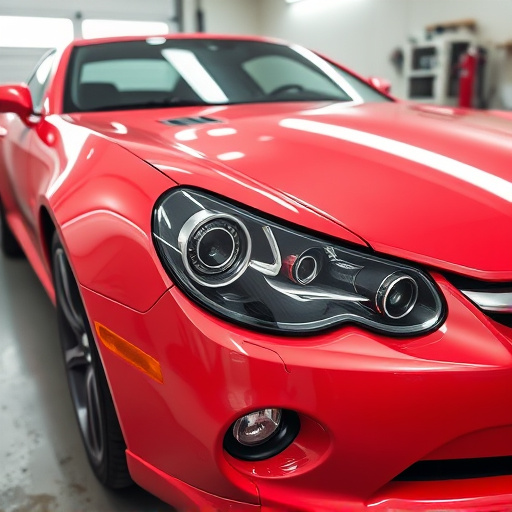
Before applying any adhesive or performing a plastic bumper cover repair, ensuring the surface is properly prepared is paramount. Start by thoroughly cleaning the area to remove any dirt, grease, or debris that could hinder adhesion. Use a mild detergent and warm water, then rinse and dry the surface completely. It’s crucial to address any existing damage like scratches or cracks before proceeding, as these can impact the repair’s long-term effectiveness. Filling and sanding are common steps in this process, helping to create a smooth base for the adhesive to bond with securely.
For optimal results following plastic bumper cover repair, consider the environment in which you’ll be working. Ideal conditions include a clean, cool, and dry area. Avoid applying adhesive in direct sunlight or extreme temperatures as these can cause premature curing or affect the adhesive’s overall performance. Additionally, wearing protective gear like gloves is essential for both safety and to prevent oil from your hands from compromising the repair. Choosing the right tools and materials specifically designed for plastic bumper cover repairs at a collision repair shop near you will make all the difference in achieving a lasting fix.
Choose Suitable Restoration Materials
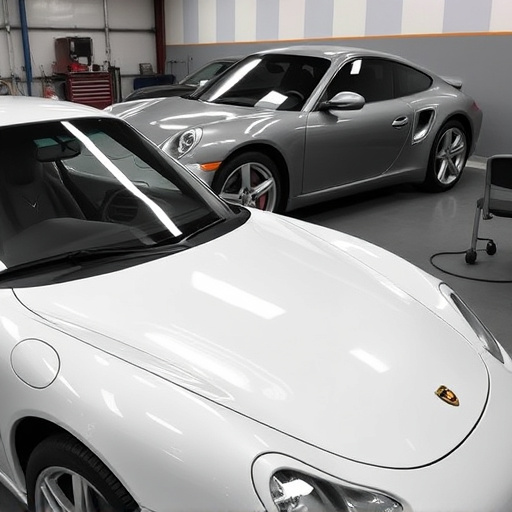
When it comes to choosing materials for your plastic bumper cover repair, opt for products specifically designed for automotive use and vehicle restoration. These will typically offer better bonding strength and durability compared to general-purpose adhesives or fillers. Look for high-quality auto repair services that provide options suitable for different types of plastic, ensuring a precise match in color and texture with your original bumper.
Using the right materials is crucial for long-lasting results. A professional automotive collision repair expert can guide you on selecting the most appropriate products based on your bumper’s condition and desired finish. This investment will not only enhance the visual appeal but also ensure structural integrity, protecting your vehicle from future damage.
Apply and Cure Coatings Properly
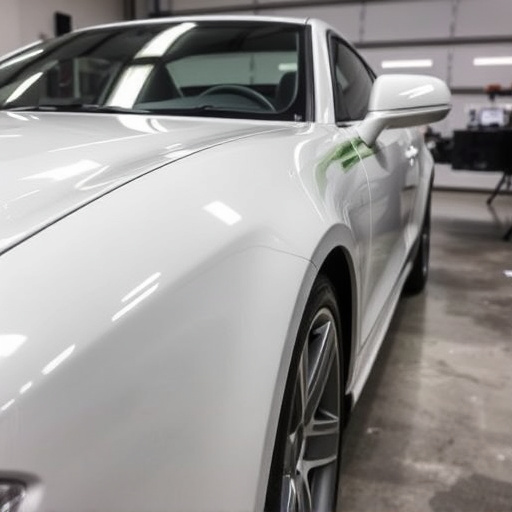
After repairing your plastic bumper cover, one of the most crucial steps to ensure longevity is proper coating application and curing. Start by preparing the surface; clean it thoroughly and ensure it’s free from any debris or dust. This involves using a suitable cleaner and a microfiber cloth to achieve a spotless finish. Once ready, apply an automotive-grade coating designed for plastic bumper covers. Follow the manufacturer’s instructions regarding application techniques and waiting times.
Coatings protect against scratches, UV damage, and fading, enhancing your repair work. Allow the initial coat to cure completely before adding subsequent layers, if needed. Proper curing ensures the coating adheres well and provides maximum protection. Regular reapplication of coatings as recommended by the manufacturer will maintain the bumper’s appearance, extending its lifespan and saving you from frequent car body shop visits for plastic bumper cover repairs due to minor damages.
After following these steps to prepare the surface, choose the right restoration materials, and apply coatings properly, you’ll have successfully maintained your plastic bumper cover. Regular care and attention will ensure a long-lasting, like-new appearance for your vehicle’s crucial front-end protection, making DIY plastic bumper cover repair both feasible and rewarding.
